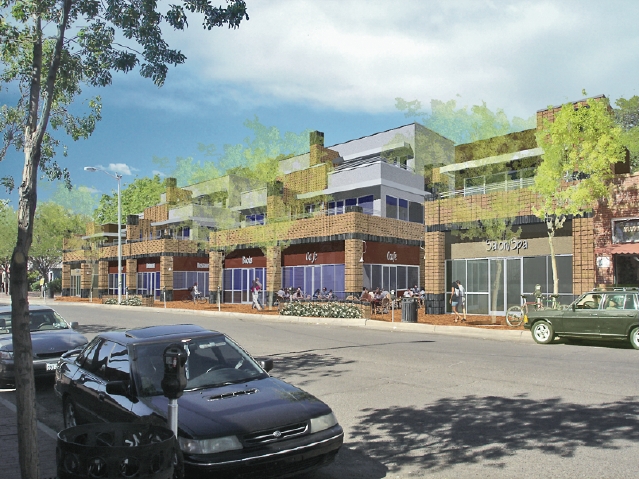It’s a quirky part of town, a loosely associated collection of little houses used for shops and restaurants on Harvard near the university. When the relatively new owners of the area, the Harvard Mall Partners LLC, are finished with them, eight of the structures on the west side of the street near Winnings Coffee will be demolished. In their stead? A mixed-use apartment complex with about 7,500 square feet of retail spaces on the ground floor. Everything between (but not including) Winnings Coffee and NMPIRG will be devoted to the 42 units and four buildings that make up the Brick Light Courtyard Apartments, due for completion in fall 2007. Not everyone is thrilled about the change. Charlotte Webster, owner of Summerhouse Tea & Trading, which resides on the block, says it took some thinking to come to terms with the demolition of the building her business is in. "I said to a friend, ‘I can’t believe they’re going to knock down my sweet ’30s-era bungalow.’ He said, ‘Charlotte, they’re not going to knock your building down. They’re going to knock their building down.’"The Harvard Mall Partners have owned property in the area for three and a half years. In that time, they’ve renamed the area the Brick Light District and worked to make the buildings maintain a consistent style with facades of brickwork. According to a 2003 Business Weekly article, a Boston couple collected the properties over the course of about 30 years. The partners bought up 23 buildings along the Harvard corridor, a metered parking lot on nearby Yale and Irish Mac’s Coffeehouse. Construction is expected to begin by January of next year, but the date is not set in stone, says Jay Rembe, one of the partners. Though the plan is no secret, Summerhouse and Petra Café & Restaurant are on month-to-month leases. Kino James, another member of the owning group, says they hope to give the businesses a 90-day notice when the construction date is finalized. Rembe says they kept the design for the new retail spaces small, 600 or 1,200 square feet, so they could continue to attract the kind of smaller local businesses that are currently in the area. Webster says she’s hoping to pick up one of the retail spaces in the new buildings, though the partners say with updated facilities, the rent will certainly increase. Hopefully, the businesses that will lose their space will be accommodated by the new structures, says James. The tricky part is figuring out what they will do in the downtime between the buildings’ demolition and when the complex is ready for use. The partners have been involved in discussions with the neighborhood for three years about the project, says architect Doug Heller. "We’ve been trying to get everyone’s input regarding what they’re looking for and what they want to see. It’s got a unique, eclectic feel, and we’re trying to complement that." Nearby neighborhoods have said they want to keep the area pedestrian-friendly, with outdoor spaces and decent sidewalks. To accommodate, public and private courtyards are planned around the complex. There are concerns about the high turnover rate of tenants in a University area, so the partners planned units of all sizes, from studio to three-bedroom, to try and attract a variety of people and families. Neighbors also didn’t want to see fully licensed bars or businesses with intensive uses, such as an automotive store or a transmission shop, Rembe says.It has yet to be seen whether the area will be able to retain the particular breed of funky that has enveloped it, Webster says, since it was a "hippie mecca" in the ’70s. "I don’t want this to happen, and I understand that it probably is going to happen," she says.
Call 346-0660 ext. 255 with news tips. E-mail your guest editorial or letter to letters@alibi.com.



